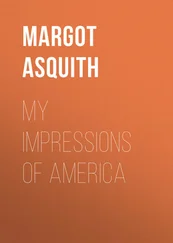Sexuality and intersections of race and gender
Sexuality is a political issue, even outside of issues related to homosexuality. It is politicized in that it is tied to resources. Sex serves not simply as an act of attraction or love but has been tied to conquest and power, and intersects with gender and race simultaneously (Nagel 2003). For instance, the colonization of Native Americans by European Americans did not take place simply in the name of land acquisition. Native American men and women were framed as sexually deviant and needing to be tamed. British colonizers and US slave owners framed African men as hypersexual and with many wives – that is, of perverse sexuality – that must be saved or at least segregated. Asian men were framed as effeminate and unable to control their women, which made them inept at constructing a proper civilization and attending to their land (Okihiro 1994). Middle Eastern societies were framed as intolerant of women’s political, cultural, and sexual freedoms and so must be “liberated” by the US military. Colonization was an act of benevolence from this perspective. Though colonial encounters were ostensibly motivated by an interest in spreading Christian heteronormative morals to “savages,” they were at times also motivated by homosexual interests (Aldrich 2002). Colonial expeditions sometimes involved homosexual encounters between colonialists and “natives.”
Beyond colonization and slavery, race relations in the United States have been legislated along sexual lines. At the macro level, anti-miscegenation laws prohibited unions between whites and nonwhites as a means of “preserving” whiteness, and ultimately family and nation, from the sexual threat of minorities (Collins 2000). Historically and still today, minorities’ bodies have become commodified as sexual oddities, either of heightened allure or of disgust, thereby reinforcing racial subjugation. At the everyday level, if a woman is afraid of a black man when walking alone in a dark corridor, she is often not responding to race alone but to the stereotype of black men as sexually aggressive. And beyond legislation on homosexual relationships, policies and informal rules around the “proper family” assume white heteronormative, middle-class nuclear family norms that do not always fit immigrant groups (Shah 2001). How race is experienced, then, is often through sexual dynamics. With this in mind, it becomes clear that race, gender, and sexuality (along with class, discussed in chapter 8) do not operate separately from one another but instead intersect. In order to understand how these social categories work, we have to consider how they inform one another.
Online resource: Though we will discuss how racialized, gendered, and sexualized stereotypes of Asians are produced and reproduced in the media and popular culture, read a critique of the Broadway musical Miss Saigon for its depiction of Vietnamese women’s identities and sexuality within the context of the Vietnam War: https://www.thedailybeast.com/sexism-race-and-the-mess-of-miss-saigon-on-broadway
From social constructions to stereotypes, prejudice, and discrimination
As people “define situations as real, they are real in their consequences,” so goes the famous quote by sociologists W. I. Thomas and Dorothy Swaine Thomas. Regardless of whether race, ethnicity, gender, and sexual orientation are socially constructed, people believe them to be real and act accordingly, leading to real effects. Stereotypes, prejudice, and discrimination are the results of the presumed real nature of these social categories. Stereotypes are blanket generalizations about an ethnic or racial group that reduce its heterogeneity to a few characteristics, which become difficult to refute despite evidence to the contrary (Marger 1995). They originate from the media, statements, and practices of family members and others, and everyday observations filtered through preformed notions of group distinctiveness. Prejudice refers to “an arbitrary belief or feeling toward an ethnic group or its individual members” (Marger 1995: 71). Prejudice exists in one’s head. It is impossible to know of someone’s prejudice until that person expresses it.
Stereotypes and prejudice are practically meaningless unless they are acted upon, that is, unless they lead to discrimination. Discrimination refers to behaviors, including verbal, that attempt to limit a group’s resources in favor of one’s own group. The most commonly cited form of discrimination is interpersonal, wherein one person prevents another from attaining a goal because of hatred towards that person’s race, gender, or sexuality. Hate crimes (discussed more below) are extreme examples of discriminatory behavior. Yet possibly more of a problem is institutional discrimination.
Institutional discrimination
Institutional discrimination refers to the unequal treatment of groups based on the normal functioning of institutionalized practices. For example, until 1967 it was illegal in many US states for a judge to marry an Asian American to a white person. An individual judge may have been quite sympathetic to such marriages but, because anti-miscegenation laws forbade such marriages, s/he rarely performed them. In this way, even non-prejudiced persons discriminate. Anti-miscegenation laws are an example of direct institutional discrimination, of institutionalized practices designed to treat groups unfairly.
Much institutional discrimination is indirect, the product of unintended practices. This can be the hardest type of discrimination to overcome. For example, women typically have to or choose to take charge of the “second shift,” that is, the domestic work of cooking, childcare, and cleaning (Hochschild 1989). This limits their ability to be promoted in the workplace. Many businesses value “face time,” that is, measuring an employee’s contribution to the office by how often s/he is present. Because those in charge of the second shift cannot put in as much “face time,” they can miss out on many promotions (Weeden 2005). This is indirect institutional discrimination. “Face time” is not premised on a sexist notion in the same way anti-miscegenation laws are premised on racialized and sexist thinking, but the effect is discriminatory towards women as a group because it fails to recognize that women take on the work of childcare in families disproportionately more than do men. As another example of indirect institutional racism, individuals convicted of felonies have trouble voting in many states, even after being released from prison and while on parole. This supposedly race-neutral law disenfranchises black and Latinx men to a disproportionate degree, for within the current police, court, and prison industrial complex, they are arrested and convicted of such crimes at a higher rate than others (Alexander 2010). In these cases, people can discriminate without knowing and without even being prejudiced.
Ideologies and oppression
Discriminatory practices and prejudice are upheld by oppressive ideologies. An ideology is a “set of principles and views that embodies the basic interests of a particular social group” (Feagin 2009). In the context of race, ethnicity, gender, and sexuality, ideologies rationalize social inequalities as “just” and “fair.” Some oppressive ideologies are explicitly hostile to groups, painting them as morally or intellectually inferior, based on religious or scientific standards, and so deserving of unequal treatment, such as neo-Nazism. These explicit beliefs continue to shape how people think, but alongside them are ideologies that appear benign or even progressive yet still reinforce racial (and other social) hierarchies. For instance, the dominant American liberal ideology of self-sufficiency and bootstrap mentality (i.e. “pull yourself up by your bootstraps”), which asserts that any group can rise up if it tries hard enough, has strong racial implications (Bonilla-Silva 2003). This set of beliefs is premised on the notion of an open, meritocratic economic system that allows individuals to succeed if they work hard and are deserving. Individuals’ rights matter more than groups’ rights. If individuals fail, it is their own fault. So, policies that assist people as members of groups, such as affirmative action, are critiqued.
Читать дальше












